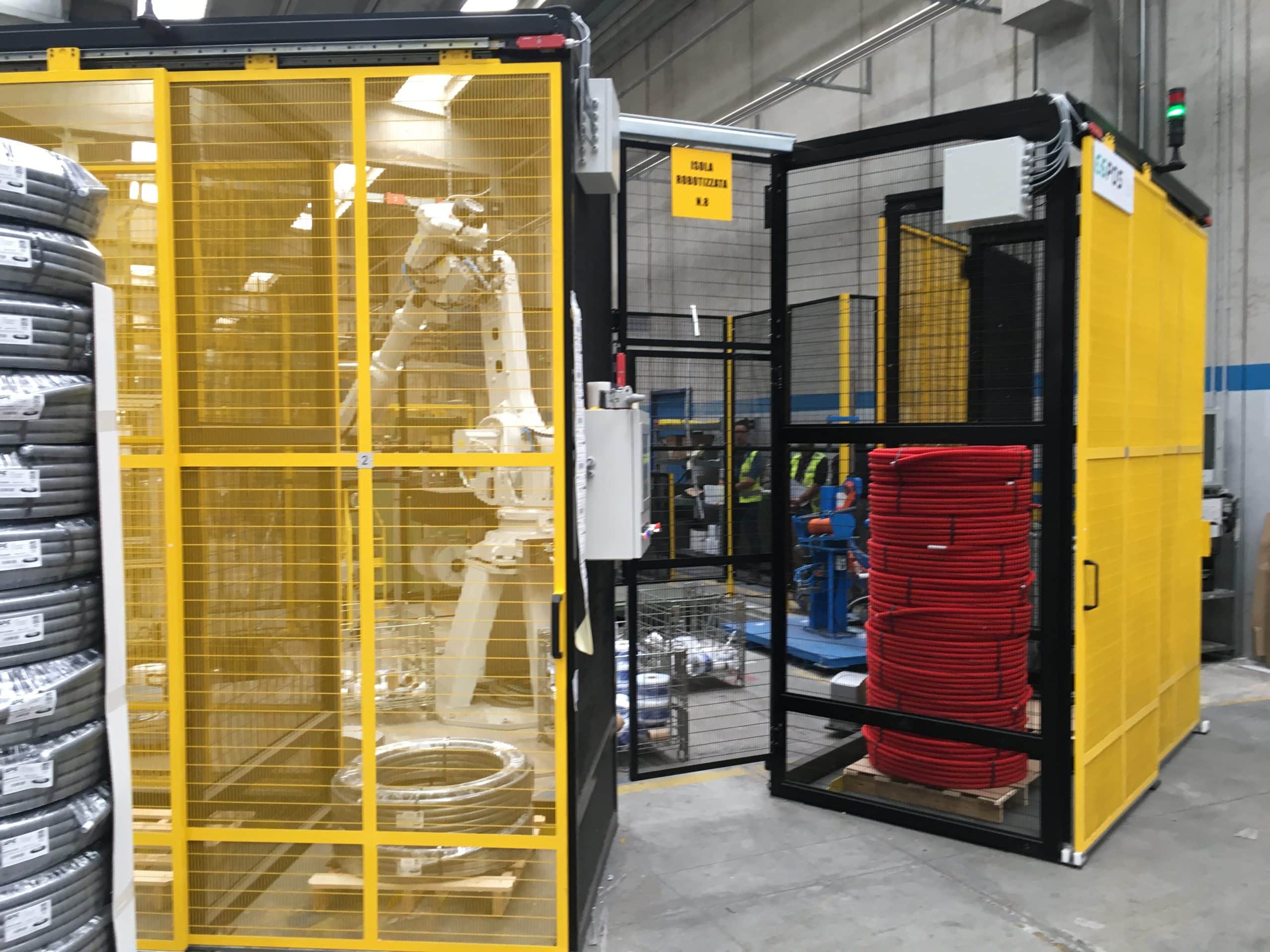Last edit: 24/07/2023

8.1 Where, for a task zone, inherently safe design measures do not adequately reduce risks, sagefuards shall be provided and they shall be designed to allow interventions to be performed safely within a task zone.
In particular, the Standard estabilishes that appropriate safeguarding shall be provided where hazards occur at the interface between task zones [8.1.2], at the access path interface [8.1.3] and at the interface between the flow of materials [8.1.4].
8.2 The span of control of safety functions and protective devices shall be determined from the risk assessment and the relevant type C Standard, considering:
- the physical layout of the IMS;
- the production process itself;
- the acess necessary to perform tasks.
8.3 The electrical equipment of the integrated manufacturing system shall be in accordance with IEC 61204-1, taking into account the instructions and recommendations of the equipment suppliers.
8.4 As far as practicable, tasks requiring manual intervention shall be performed from outside the safeguarded space. Where this is not practicable, an appropriate mode(s) shall be provided. At least two modes shall be provided: automatic and manual, which can be selected with a mode selection device.
8.5 Safeguards shall be selected in accordance with the risk assessment and the following dimensions shall be applied for the IMS:
- for areas where no human acess is necessary, the heght of fixed and movable guards shall not be less than 1400 mm;
- for areas where human acess is necessary, the height of fixed and movable guards shall not be less than 1000 m;
- tha gap between guards an the floor shall not be greater than 200 mm.
8.6 Tasks requiring manual intervention shall be performed as follow:
- they shall be performed from outside the safeguarded space, or when the IMS or part of the IMS is at standstill;
- Where 1) is not possible, then an appropriate mode(s) shall be provided;
- Where 2) is not practicable, then a safe position with safe access shall be provided.
8.7 Muting and blanking performance shall conform with ISO EN 13489-1 and/or IEC 62061.
8.8 The following information shall be used to produce both a functional and a safety requirements specification:
- results of risk assessment;
- machine operating characteristcs;
- all information relevant to the safety-related control functions which can have an influence on the safety-related control system design.
8.9 Manual reset shall not itself initiate any hazardous conditions. The reset actuator shall be situated outside the hazard zone and shall only be actuated from outside the safeguard, in complete visibility conditions of the hazard zone. Where visibility is not complete, additional protective measures shall be provided.
The standard revision of the Standard has extended this point by dedicating it entirely to access within the hazardous zone, more information is provided in the dedicated paragraph.
8.10 Start/restart of the IMS shall be in accordance with ISO 13489-1.
In particular, these manual functions shall require and intentional action from a control station outside the safeguarded space, provided that safeguards associated with that part of the IMS are in place, functional, and that all safety-raleted functions have been reset. The actuator shall be located to allow a clear and unobstructed view of the safegiarded space.
Sometimes, the risk assessment requires that visual or audible warning device be used.
8.11 The emergency stop shall be in accordance with ISO 13850 adn IEC 60204-1 and tits span of control shall be in accordance with 8.2. It shall be designed and costructed so that it can stop not only the component machine but also all equipment upstream and/or downstream if their continued operation can be hazardous. Emercency stops of the IMS shall have the same span of control or they shall have clearly idetified spans of control, their activation shall not generate hazards and where manual intervention with suspended safeguarding is provided, readily accessible emergency stop davices shll be located within the task zone.